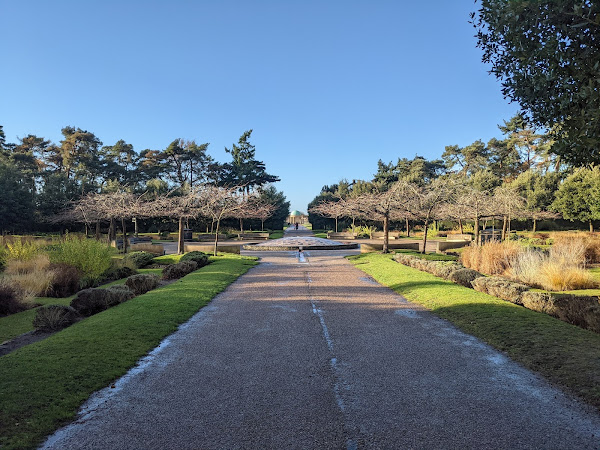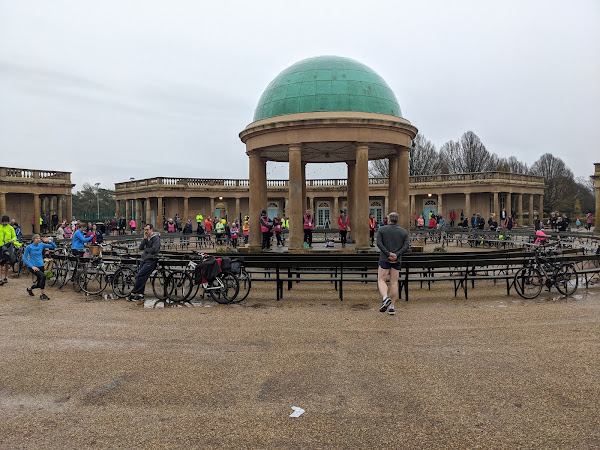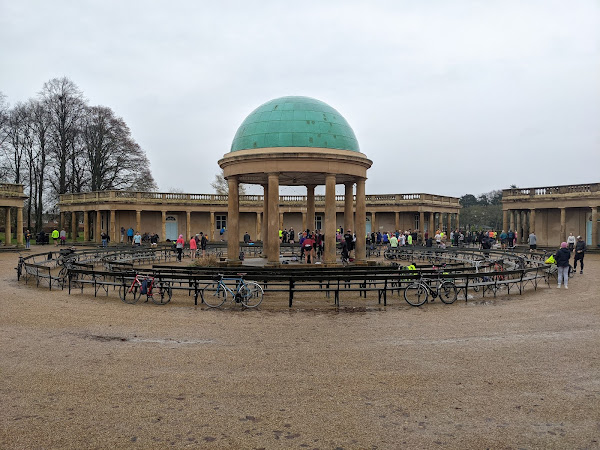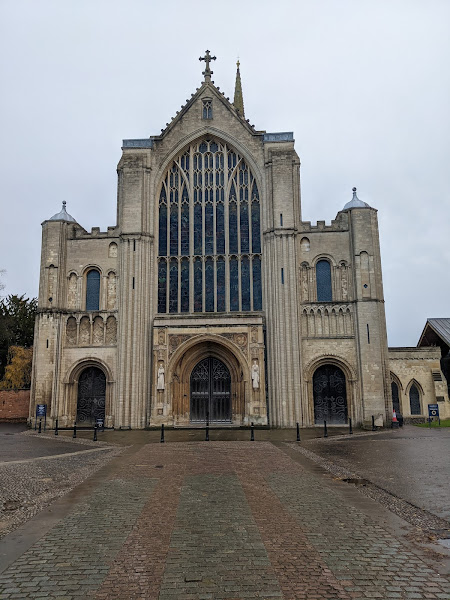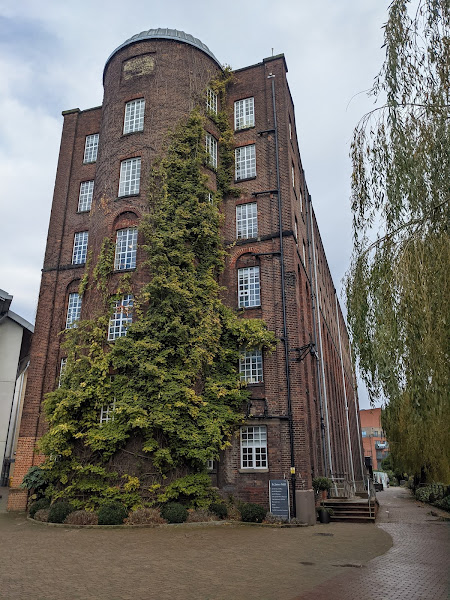In contrast to Mersea Island parkrun last week, which was attended by 27 runners, this week I planned to attend Norwich parkrun, which typically averages around 400 runners. I have also been running a lot of predominantly grass-based courses recently, and so Norwich will offer a big change of pace compared to recent events.
The area
Located in the East of England, Norwich is the County town of Norfolk. Following an investment and publicity campaign in 2008, 12 of the city's heritage buildings have become popular stops for tourists, including The Forum, The Guildhall, Dragon Hall, Norwich Castle, Norwich Cathedral, and Cow Tower.
The city council started buying farmland at the start of the 20th century to convert into parkland, which became Eaton Park. After the first world war, and in order to kick-start the local economy, the council undertook a major development program in the park, including the bandstand, and the pavilion.
Additionally, the grounds benefited from extensive landscaping work, which resulted in the installation of a rose garden, model boating lake, and lily pond.
As well as the building development, the park hosts a wide range of sports, including a cycling speedway and pitch and putt facilities.
The course
Starting at the south of the park, the course follows three and a half laps around the park, or four times over the bridge, before finishing in the centre of the park near the bandstand. The route is run entirely on tarmac paths, although they can be slippery when covered in leaves in autumn.
Limited free parking is available in the carparks at the east and west ends of park, and additional paid parking is available nearby. Toilets and a cafe are available at the bandstand near the finish funnel.
The run
The weather today in the run up to the run was rain, which was forecast to continue throughout the run. Fortunately, I had my rain jacket with me, and so I was able to adapt quite easily. We started the event with the first timer's brief where we received the advice to count how many times you cross the bridge - 4 times! As the course is 3 and a half laps, it could be easy to lose track, so having a specific reference to count was quite useful. The run briefing was very short with the team keeping to the principles of the temporary framework, which was followed by a short walk to the start in the south-western corner of the park. Runners positioned themselves roughly based on expected finish time, and with a very quick countdown, we were off!
As the run was starting, so too was the rain stopping! The weather fairies were clearly looking out for Norwich parkrun today! After running on grass for the previous 4 events, running on tarmac felt relatively easy, and so I was feeling like a fast run was on the cards. With so many runners, after we had started, it was relatively easy to spot people running similar paces and stick with them. With the combination of all of these factors, I was able to push on to my first sub-23-minute 5k, finishing in 22:52 according to parkrun time, and setting another new PB.
Thank you to all of the event team for such a well-oiled event. Even small things like the length of the funnel are especially notable when you're able to contrast them with the logistics of smaller events!
Post run
As there are other parkruns in Norwich, I wanted to explore areas of the city which would be harder to explore from the other locations, and so the Norwich 12 provided the inspiration for a run-tour of the city.
The Forum
Built to coincide with the millennium, The Forum is a cornerstone of the community in Norwich, with over 2.5 million people visiting its libraries annually.
The Guildhall
Construction on the Grade I listed Guildhall was completed in 1413, and from that point it was where the economic and political power of Norwich was governed. It continued to be the seat of local government until 1938, when the council moved to the newly built city hall.
Norwich Castle
Norwich Castle was built as a symbol of power for William the Conqueror during the 1060s-1070s - a time when most buildings were wooden structures.
As with many castles, and for defensive purposes, the castle was built on a mound, and the mound Norwich castle is built upon is the largest in the country.
As a consequence of the size of the castle's mound, the castle itself is primarily accessed using a bridge.
Dragon Hall
The Grade I listed Dragon Hall is a medieval merchant's trading hall, which is thought to be unique in Europe at the time of its construction by virtue of the fact it was owned by a single person - Robert Toppes. Archeological research suggests a building has been on the site since roughly the year 1000.
Norwich Cathedral
Work on Norwich Cathedral started soon after the completion of Norwich Castle, and like the castle, the cathedral was built to reinforce the power and influence introduced with the building of the castle.
The cathedral boasts the tallest Norman tower at 40 metres in England.
St James Mill
Built during the Industrial Revolution, St James Mill is a former textile mill, built in an ultimately vain attempt to save the textile industry in Norwich. The building is still in tact, and is now the location of modern office spaces.
Cow Tower
While not part of the Norwich 12, I couldn't pass up the opportunity to see the Cow Tower - an artillery tower built between 1398 and 1399 to defend the city from advances from enemies by river.
Other stops
This run covered only 6 of the 12 destinations, so I will make a note to revisit, and complete the tour next time I visit a Norwich event. Another observation from the run is that like other historic cities, Norwich has many churches and abbeys and other treasures to discover.
If you are curious about exploring the Norwich 12, I would definitely recommend it. My tour, which started at Eaton Park, and didn't include the full 12, was roughly 15 km with the various deviations, but parking is available closer to the city centre too.
References: Friends of Eaton Park

